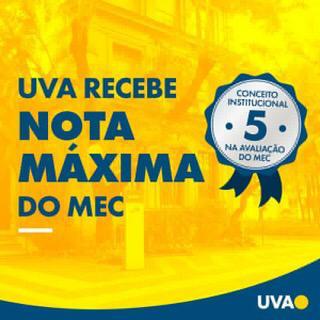Art The Curse of Mineral Resources: An Analysis from Moatize in Central Mozambique
A maldição dos recursos minerais: uma análise de Moatize no centro de Moçambique
Resumo
In this article I discuss mining exploration in Mozambique from the Moatize region, which is a place
rich in carboniferous mineral resources. I emphasize throughout my approach that, contrary to
expectations that the exploration of coal in Moatize would bring social development to the communities
around the projects, reality shows that they do not benefit the countries where it is carried out, but it
works as a source of large-scale resource removal and as a form of development that ends up benefiting
rich countries at the expense of the poor. On the other hand, many of these extractive resources occur
on the lands of peasants and indigenous groups, who are also involved in resource extraction such as
artisanal miners or workers in large-scale mines and resist these encroachments on their lands (Jacka,
2018 and Gilberthorpe & Rajak, 2017). Coal mining in Moatize, in the manner in which it is carried
out, puts the survival of the communities around it into question, as they remain in the cycle of poverty,
and a series of human rights violations occur when they are resettled in new regions by the State.
Downloads
Referências
em Moçambique: Uma reflexão sobre a situação dos deslocados do
desenvolvimento. REMHU, Brasília, 2016.
BALA, M. The Theory of Social Justice and Involuntary Resettlement. Indian
Journal of Human Development, 2(2), 2008, 1-10.
BENNET, O. & MCDOWEL, C. The human cost of development and resettlement.
Palgrave Macmillan, New York, 2012.
CERNEA, M. Impoverishment Risks, Risk Management, and Reconstruction: A
Model of Population Displacement and Resettlement. Washington DC, 2000.
CHAMBERS, R. Desenvolvimento Rural: Fazer dos Últimos os Primeiros. Adra,
Angola, 1983.
CHIZENGA, A. Mineração e Conflito Ambiental: Disputas em torno da
implantação do megaprojeto da Vale na Bacia Carbonífera de Moatize,
Moçambique. Dissertação de mestrado, Porto Alegre, Rio Grande do Sul, 2016.
COWELL, S. J., WEHRMEYER, W., ARGUST, P. W., GRAHAM, J., &
ROBERTSON, S. Sustainability and the primary extraction industries: theory and
practice. Resources Policy, 25(4), 1999, 277-286.
DPS of Tete. Situational Analysis on Health equity and Social determinants of
health, Tete Province, Mozambique. Training and Research Support Centre,
Embassy of Denmark, Maputo, 2015.
EVERS, S.T.M. et al. Africa for sale? Positioning the State, Land and Society in
Foreign Large-Scale Land Acquisitions in Africa. Tuta Sub Aegide Pallas, Leiden,
Boston, 2013.
FIAN. Desenvolvimento, para quem? Impacto dos projetos de desenvolvimento
sobre os direitos sociais da população rural moçambicana. Heidelberg: FIAN
International, 2010.
GILBERTHORPE, E. & RAJAK, D. The Anthropology of Extraction: Critical
Perspectives on the Resource Curse. The Journal of Development Studies, 2017.
HOTA, P. & BEHERA, B. Opencast coal mining and sustainable local livelihoods
in Odisha, India. Springer-Verlag Berlin Heidelberg, 2016.
Human Right Watch. What is a house without food? Mozambique’s coal mining
boom and resettlements. USA, 2013.
International Monetary Fund. Regional Economic Outlook-Sub-Saharan Africa:
Sustaining Growth amid Global Uncertainty. 2012. Retrieved from
https://www.imf.org/external/pubs/ft/reo/2012/afr/eng/sreo0412.htm.
JACKA, J. The Anthropology of Mining: The Social and Environmental Impacts of
Resource Extraction in the Mineral Age. The Annual Review of Anthropology,
2018, pp. 61-77.
KIRSCHNER, J. & POWER, M. Mining and extractive urbanism: Postdevelopment
in a Mozambican boomtown. Journal of Geoforum, 2015, 61: 67–78.
Lei de Terras no 19/97 de 1 de outubro. Imprensa de Moçambique
Lei 24/2000.
Lei de Minas no 14/ 2002 de 26 de junho. Imprensa de Moçambique.
MATOS, E. & MEDEIROS, R. Exploração mineira em Moatize, no centro de
Moçambique: que futuro para as comunidades locais. 2012, UFU, ISSN 983-487X.
MATOS, E. & MEDEIROS, R. (2017). Exploração mineira em Moçambique: uma
análise do quadro legislativo. Revista NERA, 20:38, 2017, pp. 280-315. Disponível
em: https://revista.fct.unesp.br/index.php/nera/article/view/5301
MOSCA, J., & SELEMANE, T. El dorado Tete: Os Mega projectos de Mineração.
Maputo: Centro de Integridade Pública, 2011.
Rio Doce Moçambique. Projecto Carvão Moatize – Diagnóstico Ambiental da
Mina de Carvão. Moçambique, 2006.
TERMINSKI, B. Development-induced displacement and resettlement:
theoretical frameworks and current challenges, Geneva, 2013.
UNAC. Os senhores da terra - Análise Preliminar do Fenómeno de Usurpação de
Terra em Moçambique. Justiça Ambiental e UNAC, Maputo, 2011.
World Bank. The World Bank Operational Policy 4.12: Involuntary Resettlement.
2001. Retrieved from http://web.worldbank.org/WBSITE/EXTERNAL/PROJECTS/
EXTPOLICIES/EXTOPMANUAL/0,contentMDK:20064610~menuPK:64701637~p
agePK:64709096~piPK:64709108~theSitePK:502184,00.html.



